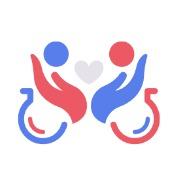PWD help
Empowering Person With Disability. Our project provides tailored support for persons with disabilities (PWD) through a streamlined and accessible platform.
Created on 11th February 2024
•
PWD help
Empowering Person With Disability. Our project provides tailored support for persons with disabilities (PWD) through a streamlined and accessible platform.
The problem PWD help solves
ABOUT 15% of the world’s population lives with some form of disability and 2-4% among them experience severe difficulties in day-to-day functioning. According to the United Nations, of the one billion population of persons with disabilities globally, 80% live in developing countries.
PWD Help bridges gaps:
-
Job Opportunities: Connects PWDs to employment, remote work, and skill development opportunities, fostering inclusive workplaces.
-
Community Hub: Facilitates community-building, offering support groups, shared experiences, and local resources for a sense of belonging.
-
Accessible Events: Ensures event inclusivity with information on accessible venues, sign language interpreters, and accommodations.
-
Skill Development: Provides tailored programs for continuous learning, enhancing professional and personal capabilities.
-
Resource Directory: Centralizes disability-friendly services, making it easier to access healthcare, transportation, and essential services.
PWD Help is more than a platform; it's a catalyst for change, ensuring active and inclusive participation in various life aspects for individuals with disabilities.
Challenges we ran into
-
Accessibility Compliance: Ensuring that the website complies with accessibility standards, such as the Web Content Accessibility Guidelines (WCAG), to accommodate users with various disabilities. This includes providing alternatives for non-text content, ensuring keyboard navigation, and implementing proper color contrast.
-
User Interface Design: Designing a user interface (UI) that is intuitive and easy to navigate for users with disabilities. This may involve providing clear headings, consistent navigation menus, and interactive elements that are accessible via keyboard commands or assistive technologies.
-
Assistive Technology Compatibility: Ensuring compatibility with a wide range of assistive technologies, such as screen readers, magnifiers, and voice recognition software, to facilitate access for users with disabilities. This requires testing the website with different assistive technologies to identify and address any compatibility issues.
-
Content Presentation: Presenting content in multiple formats to accommodate users with different disabilities, such as providing text alternatives for images, captions for videos, and transcripts for audio content. Additionally, organizing content in a logical and structured manner to facilitate comprehension and navigation.
-
Input Method Flexibility: Supporting various input methods, including keyboard, mouse, touch screen, and voice commands, to accommodate users with different abilities and preferences. This may involve implementing accessible form controls, customizing input fields, and providing alternative input options for users with limited dexterity.
-
Performance Optimization: Optimizing the website's performance to ensure fast loading times and smooth navigation, particularly for users with limited bandwidth or slower internet connections. This includes optimizing images,
Tracks Applied (4)
Best use of Postman
Postman at Hack This Fall
Best Use of Flow
Major League Hacking
Best Use of MongoDB Atlas
Major League Hacking
